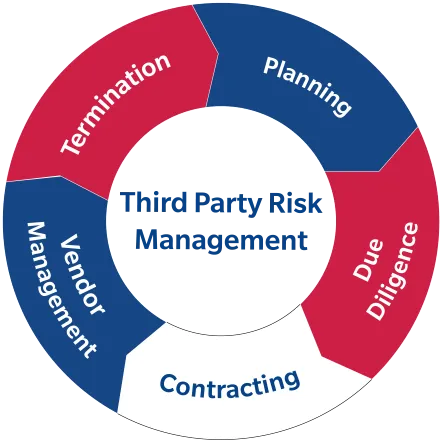Introduction
In today’s interconnected business landscape, organizations often rely on third-party vendors, suppliers, and service providers to enhance operational efficiency and expand their capabilities. While these partnerships offer numerous benefits, they also introduce potential risks associated with data breaches, security vulnerabilities, and compliance lapses. To mitigate these risks and ensure the smooth functioning of business operations, implementing a robust Third-Party Lifecycle Management (TPLM) process is essential. This article delves into the significance of TPLM and outlines the six crucial steps in its successful implementation.
-
Sourcing and Selection
The first step in effective TPLM is carefully sourcing and selecting third-party partners. Organizations must conduct thorough due diligence to assess potential vendors’ credibility, reliability, and track record. Evaluating their security practices, compliance with regulations, and financial stability are critical aspects of this stage. Organizations can establish a strong foundation for a secure and successful partnership by selecting reputable and trustworthy partners.
-
Intake and Score
Once potential third-party partners have been identified, an intake process must be established to gather detailed information about their operations. This step involves assessing their risk profile and assigning a risk score based on various criteria such as data access, the criticality of services, and compliance history. This risk scoring helps prioritize allocating resources for monitoring and managing third parties throughout their lifecycle.
-
Identity and Access Management (IAM)
IAM is a pivotal aspect of TPLM, as it ensures that third parties have access only to the data and systems necessary for their specific role. Strong authentication and access controls help reduce the risk of unauthorized data access or misuse. Additionally, IAM aids in monitoring the activities of third parties, providing valuable insights into their interactions with sensitive data and systems.
-
Secure Connection
Establishing a secure connection between the organization and its third-party partners is vital to safeguarding data during transmission. Encryption protocols and specific communication channels protect sensitive information from potential interception and cyberattacks. Regular security assessments of these connections are essential to identify and address vulnerabilities promptly.
-
Monitor and Assess
Once the partnership is established, continuous monitoring of third-party activities is crucial. Automated monitoring tools can help track their performance, compliance adherence, and potential security breaches in real time. Regular assessments and audits should be conducted to ensure that third parties maintain the required security standards throughout the partnership.
-
Report and Manage
Effective TPLM requires a robust reporting and management system to facilitate clear communication between the organization and its third-party partners. Regular reporting helps keep stakeholders informed about each third party’s performance, risks, and compliance status. In case of any identified issues, appropriate measures should be taken promptly, including corrective action plans and, if necessary, termination of the partnership.
Conclusion
Third-party partnerships are crucial for enhancing competitiveness and expanding capabilities in an increasingly interconnected business world. However, these collaborations also introduce potential risks, making Third-Party Lifecycle Management a vital aspect of modern business practices. By implementing the six key steps of TPLM – sourcing and selection, intake and score, identity and access management, secure connection, monitoring and assessing, and reporting and managing – organizations can minimize vulnerabilities and ensure the security and efficiency of their operations.
Proactive and diligent management of third-party relationships protects sensitive data and systems and fosters trust among customers and stakeholders. Moreover, it allows organizations to focus on core competencies while leveraging the expertise and resources of trusted partners to achieve shared goals. In the ever-evolving landscape of cybersecurity threats and regulatory requirements, prioritizing TPLM is a strategic imperative for businesses seeking sustained success and resilience.

